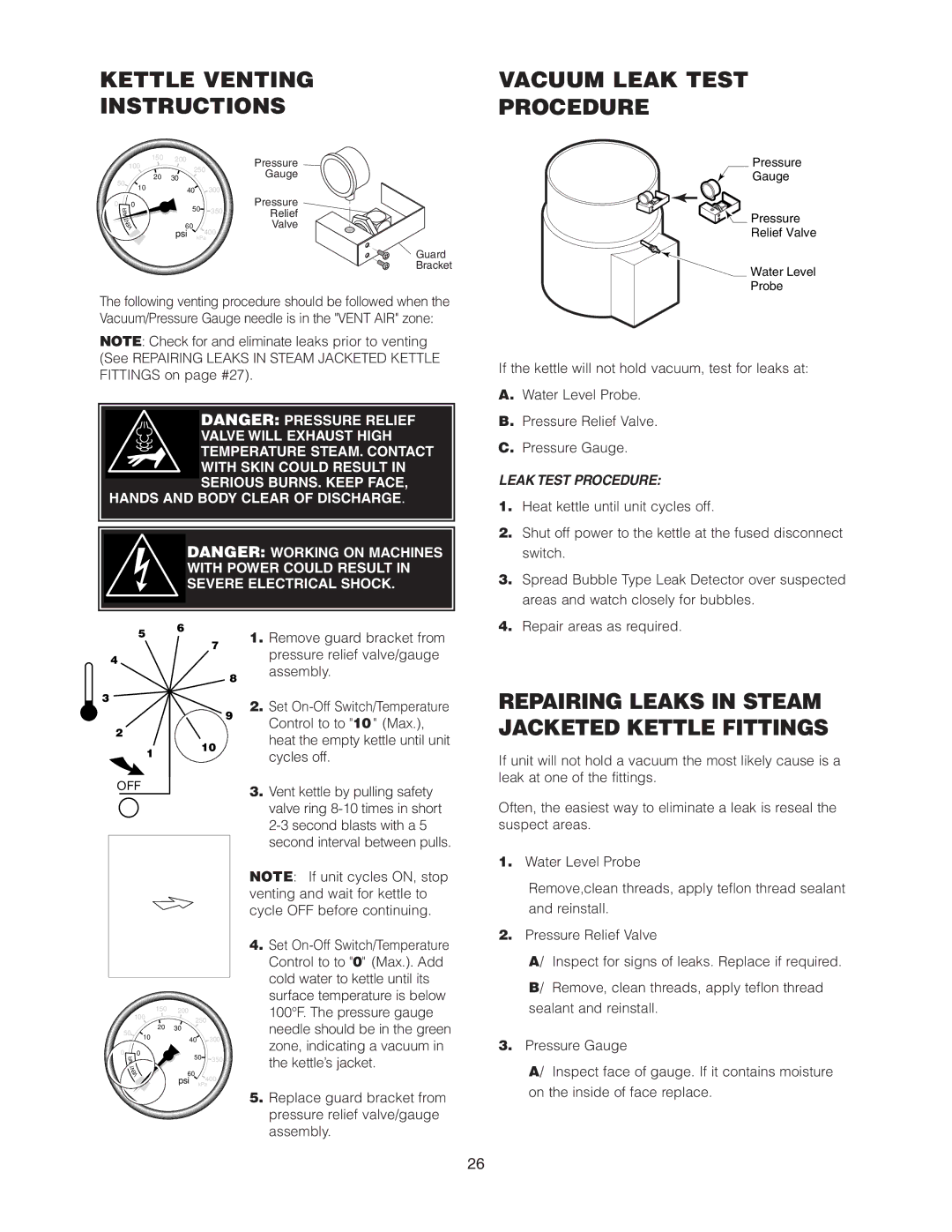KGL-25-T, KGT-25, KGL-25, KGT-25-T, KCL-25-T specifications
Cleveland Range, a leader in commercial cooking equipment, presents an impressive lineup of steam cooking solutions with its models KCL-25-T, KGT-25-T, KGL-25, KGT-25, and KGL-25-T. These products are primarily designed for heavy-duty applications in restaurants, schools, and other foodservice environments, offering unmatched performance in steam cooking.One of the most notable features across these models is their ease of use. Each unit boasts a digital control panel that allows operators to easily set time and temperature, ensuring that food is cooked to perfection every time. The intuitive design reduces the potential for operator error, making it an excellent choice for high-paced kitchens.
In terms of technology, Cleveland Range incorporates SmartSteam technology in these models. This innovative feature ensures an even distribution of steam within the cooking chamber, which enhances the cooking process and retains the nutritional value of food. The result is consistently moist, flavorful dishes with superior texture.
Durability is a key characteristic of the KCL-25-T, KGT-25-T, KGL-25, KGT-25, and KGL-25-T models. They are constructed with high-quality stainless steel, making them resistant to rust and corrosion, which is essential in a commercial kitchen environment. Their robust construction not only extends the lifespan of the equipment but also makes them easier to clean and maintain.
Energy efficiency is another significant advantage of these Cleveland Range models. Featuring insulated cooking chambers and efficient design, these steamers use less energy compared to traditional cooking methods. This translates into lower utility costs and reduces the kitchen’s carbon footprint, aligning with the broader goals of sustainability in the foodservice industry.
The KGT-25 and KGL-25 series particularly excel in versatility, allowing users to cook a wide range of menu items from vegetables to desserts. Their ability to accommodate full-size pans enhances their functionality, making them suitable for various food preparation needs.
In summary, Cleveland Range's KCL-25-T, KGT-25-T, KGL-25, KGT-25, and KGL-25-T models offer an exceptional combination of ease of use, advanced steam technology, durability, and energy efficiency. These features make them ideal solutions for foodservice operations that demand reliability and quality in steam cooking, catering to both large-scale and smaller culinary needs with superior performance.

